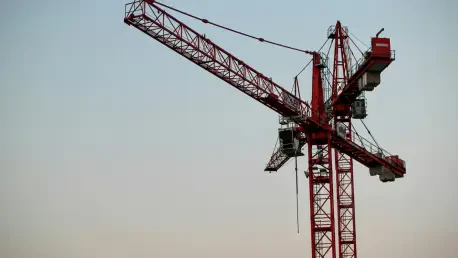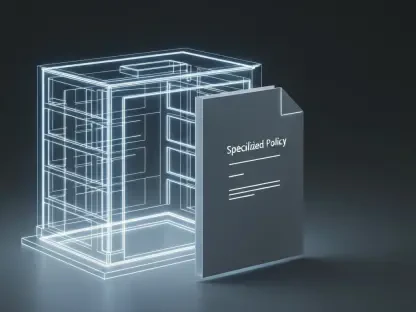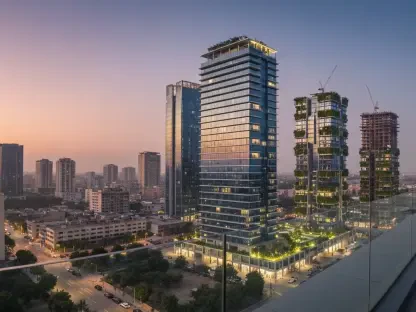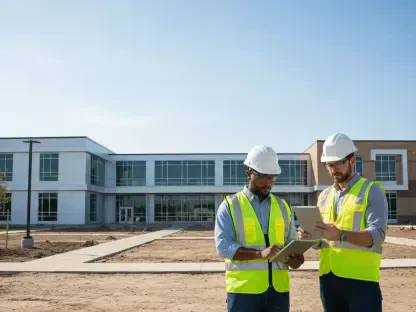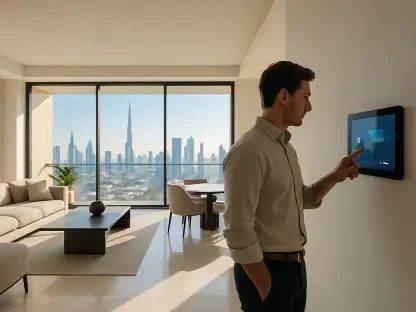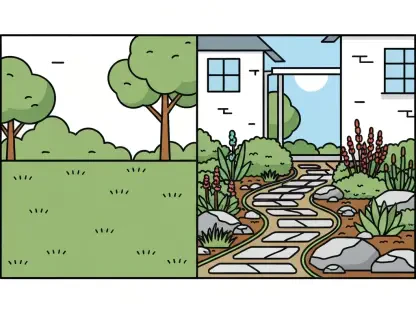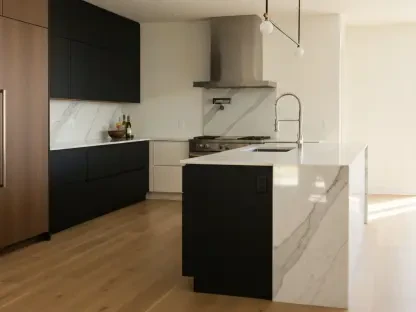The global market for gate closers is experiencing a remarkable surge, driven by evolving consumer demands for automated security solutions across residential, commercial, and industrial sectors. As societies increasingly prioritize safety, control, and smart functionality in their infrastructure, gate closers have emerged as critical components of contemporary architectural hardware and security systems. Advancements in technology, particularly in hydraulic and adjustable speed models, underscore the market’s expansion, reflecting a dynamic convergence of urbanization trends and heightened security awareness. As urban areas continue to grow, this sector not only addresses the demand for robust security but also adapts to the smart infrastructure wave, which includes integrating smart home solutions. The future of gate closers appears bright, as they pave the way for greater automation and security sophistication.
Increasing Demand in Diverse Sectors
The ascent of the gate closer market can be attributed to its widespread application across various sectors. As gate closers find relevance in residential, commercial, and industrial settings, they not only enhance security but also streamline pedestrian flow and reduce wear on gates. Modern urban infrastructure demands solutions that balance convenience with security, positioning gate closers at the intersection of these requirements. Key to this trend is the growing adoption of smart city concepts incorporating advanced gate closers within their infrastructure. This integration facilitates greater safety and efficiency, especially in bustling urban environments where pedestrian and vehicular flow needs precise management.
Within residential areas, particularly in gated communities and luxury estates, there is a pronounced emphasis on security and aesthetics, with gate closers meeting both criteria. In commercial and industrial settings, they are crucial for safety compliance, helping manage large footfalls in venues like warehouses, schools, and public health facilities. These sectors require reliable solutions to maintain both security and regulatory adherence. The capacity of gate closers to facilitate controlled access also addresses increasing regulations around fire safety and emergency egress, making them indispensable within modern building protocols.
Market Dynamics and Growth Projections
The market for gate closers was valued at approximately 4.07 billion USD in 2023, with projections suggesting a rise to 6.1 billion USD by 2032. This substantial growth is driven by a CAGR of 4.6% from 2025 to 2032, reflecting a rising tide of constructions and renovations worldwide. As architectural developments emphasize security and automation, consumers lean toward more sophisticated gate-closing solutions. The shift is noticeable in busy metropolitan regions prioritizing modern convenience, offering compelling growth potential.
Rapid urbanization, alongside burgeoning construction endeavors, fuels the demand for gate closers, especially in densely populated regions where security solutions are paramount. Heightened awareness of home and business security underpins the upward trend in gate closer adoption. Particularly in the Asia Pacific region, swift infrastructural advancements and burgeoning urban landscapes serve as catalysts for market growth. Developed nations in North America and Europe continue to see steady demand, largely propelled by refurbishment projects focusing on enhancing pre-existing security systems.
Leading Innovations and Technological Integration
Technological innovation serves as the backbone of advancement in gate closers, transforming their design and functionality. Modern models incorporate features such as adjustable closing speeds, secure latching, and weather resilience, making gate closers versatile in diverse applications. Hydraulic closers solidify their market predominance by managing heavy-duty operations adeptly, a necessity in sectors demanding robust solutions. Their durability is complemented by their adaptability to harsh environmental conditions—vital for regions with extreme weather scenarios.
The push towards the integration of smart technologies in home solutions has also impacted gate closers significantly. Newer devices come equipped with motion sensors and wireless connectivity, enhancing user convenience and aligning with the broader smart home ecosystem. This facilitates hands-free operation and increases adaptability, factors crucial for technologically savvy consumers. Smart models that adjust according to environmental variables are gaining popularity, demonstrating the seamless blend of technology in daily functionality and meeting the preferences of tech-oriented property developers and owners.
Design Trends and Sustainability Efforts
In tandem with functional advancements, design innovation in gate closers has aimed to harmonize with contemporary architectural styles. The trend veers toward creating sleek and compact models that unify aesthetic appeal with functionality. Manufacturers focus on developing visually harmonious designs that integrate seamlessly into modern structures. Additionally, quiet operation, soft-closing mechanisms, and enhanced longevity define the latest product features, contributing to a superior user experience.
Environmental sustainability has emerged as a pivotal concern for manufacturers, driving the use of eco-friendly materials and energy-efficient designs. With sustainability standards shaping construction practices globally, gate closers adhering to these principles gain an edge. Moreover, collaborations with smart home providers are anticipated to widen market reach, offering new growth avenues as smart homes become more widespread.
Future innovations in materials and energy consumption patterns promise a continued evolution of gate closers. As the industry progresses, anticipations incline towards systems where sustainability and cutting-edge technology coexist. This alignment not only appeals to environmentally conscientious consumers but also meets broader regulatory directions aiming for greener building practices.
Market Challenges and Potential Opportunities
Despite the positive trajectory, the gate closer market faces several challenges; competition from cost-effective local manufacturers is significant, potentially limiting the market share and profitability of established brands. Product standardization across varied regional building codes and standards escalates complexity, necessitating diversified product lines catering to specific geographic demands. Further complicating matters are technical installation issues; misalignment may undermine device performance, deterring consumer confidence and inflating costs associated with after-sales services.
Conversely, the inherent longevity and durability of quality gate closers mean less frequent replacements, which might constrict recurring sales opportunities. Translating this into an advantage demands innovative business models fostering customer relationships and value-added services ensuring long-term engagement. Manufacturers who navigate these challenges effectively, leveraging technology and consumer insights, are poised to capitalize on future opportunities.
As urban development continues globally, the gate closer market stands at the forefront of balancing security with convenience. The increasing focus on intelligent infrastructure anticipates a rise in demand for automatic systems, especially as smart city developments progress. Firms dedicated to research and development will likely secure a competitive edge, particularly those innovating eco-friendly and integrated solutions. In this context, partnerships in sustainable construction efforts will fortify the role of gate closers in the architecture of tomorrow.
Looking Ahead: Strategic Insights
The gate closer market, despite showing positive growth trends, encounters several hurdles. A major challenge is the stiff competition from local manufacturers offering more affordable options, which could potentially affect the market dominance and profit margins of established brands. Additionally, varying regional building codes and standards necessitate product diversification to meet specific regional needs, adding to the complexity. Technical issues during installation, such as misalignment, can impair device performance, erode consumer trust, and increase after-sales service costs.
On the flip side, high-quality gate closers boast durability and longevity, reducing the frequency of replacements. This characteristic, while potentially reducing recurring sales, can be turned into an advantage by adopting creative business models that enhance customer relationships. By offering value-added services, companies can ensure ongoing engagement. Manufacturers who master these challenges by harnessing technology and consumer insights will likely benefit in the long run.
As global urbanization advances, the gate closer market plays a crucial role in merging security with convenience. The push towards intelligent infrastructure hints at growing demand for automated systems, particularly as smart city projects gain momentum. Companies investing in research and eco-friendly innovations will likely gain a competitive advantage. Collaborations in sustainable construction will further solidify gate closers’ significance in future architectural designs.
